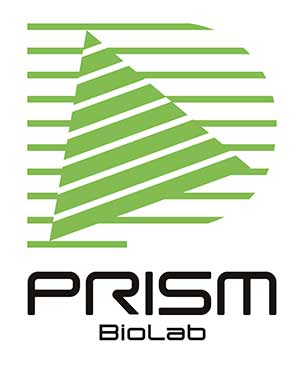Published on: December 19, 2022
PPI-targeted drug discovery strategy is intriguing field. Target identification and functional modulation are crucial for new drug discovery and development. Assay development, technological improvements of structural biology and bioinformatics allowed us to rapidly identify the target so far, even though there are still challenges. Target-based drug discovery is a current standard, and a project often starts with obvious target protein or other biomolecules. It is one of our goals to establish a clearcut strategy and methodology for PPI-targeted drug discovery.
On the other hand, it is still a huge issue how to modulate the function of the target by the use of single molecule. Direct strategy is a substrate mimicry of the target protein and lots of kinase inhibitors have been developed, for example. In the field of PPI, disturbance of PPI by direct blocking of two proteins are also simple and reliable strategy and PPI inhibitors have been an intriguing focus on PPI-targeted drug.
However, as in other protein-targeted cases, allosteric interaction would interrupt normal PPI as well by inducing a conformational change of the target protein. Potentially, both direct and allosteric interaction by a single molecule affect PPI, and affinity balance could change the efficacy and/or toxicity. Additionally, a molecule can potentially stabilize PPI by interaction two or more proteins When you target PPI, it is always interesting to think the possibility of applying PPI inhibitor, activator and modulator for disease treatment.
Have you ever thought about the definition of PPI inhibitor? PPI inhibitor is a molecule that interferes PPI and induces the function loss of the target protein. This “definition” would be understandable as a general term. PPI inhibitors are classified into 4 classes: modified peptides (class A), modified peptides and foldamers (class B), structural mimetics (class C) and mechanistic mimetics (class D).1) This classification allows us to understand peptidomimetics which have long been investigated till now. However, antibody drugs are, in a sense, PPI inhibitor, aren’t they? Antibodies are proteins that recognizes a certain amino acid sequence with high affinity. Antibody-substrate interaction is obviously a kind of PPI and the antibody inhibits the function. Do you think antibodies are PPI inhibitors or PPI drugs?
Antibody drugs have high affinity and selectivity against the target protein but there are issues on oral availability, cell permeability and storability. It’ll be a tremendous impact if a small molecule with high affinity and specificity with the same mode of action as an antibody drug because small molecules would allow oral administration.
A number of PPI inhibitors and modulators are under clinical trials now. Recent intensive PPI targets on clinical trials are MDM2/p53, XIAP/caspase-9 and PD-1/PD-L1, for example.2)
There is a variety of potential mode of action when you target PPI. PepMetics® molecules fit in drug discovery, targeting a variety of PPI, because they can mimic a part of the natural counterpart in general. Hit finding is obviously crucial and our library has a potential to grasp any kind of PPI. Still, we need to expand the real library to target all the PPIs but even now it’s powerful approach for a PPI-inhibitor hit finding. Since SBDD technology is applicable for our molecules, we are taking it as an advantageous strategy for rapid generation of PPI inhibitors.
We are always welcome for scientific discussion on potential strategy for drug discovery and development. It’ll be interesting to discuss what PPI inhibitor/modulator is. PPI field is still developing, and basic science would be a trigger of a paradigm shift. Please feel free to contact us to get together for a breakthrough.
- Structure-Based Design of Inhibitors of Protein–Protein Interactions: Mimicking Peptide Binding Epitopes (https://onlinelibrary.wiley.com/doi/full/10.1002/anie.201412070)
- Recent advances in the development of protein–protein interactions modulators: mechanisms and clinical trials (https://www.nature.com/articles/s41392-020-00315-3)

